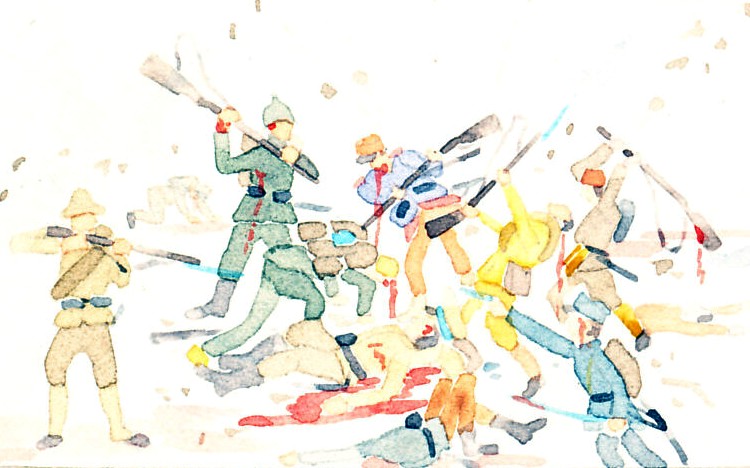Russian troops fleeing a solitary German soldier. The Russian First Army invaded Germany in August 1914, and defeated the Germans in the Battle of Gumbinnen on the 20th. In September the Germans drove them out of Russia in the First Battle of the Masurian Lakes. In September and October, a joint German, Austro-Hungarian offensive drove the Russians back almost to Warsaw. Illustration by E. H. Nunes.

Die Russen haben große Hoffnungen auf den Krieg gesetzt, - es ist aber auch eine Kehrseite dabei.
The Russians have set high hopes for the war - but there is also a downside to that.
Reverse:
Kriegs-Postkarte der Meggendorfer-Blätter, München. Nr. 25
War postcard of the Meggendorfer Blätter, Munich. # 25
Other views:
Larger
